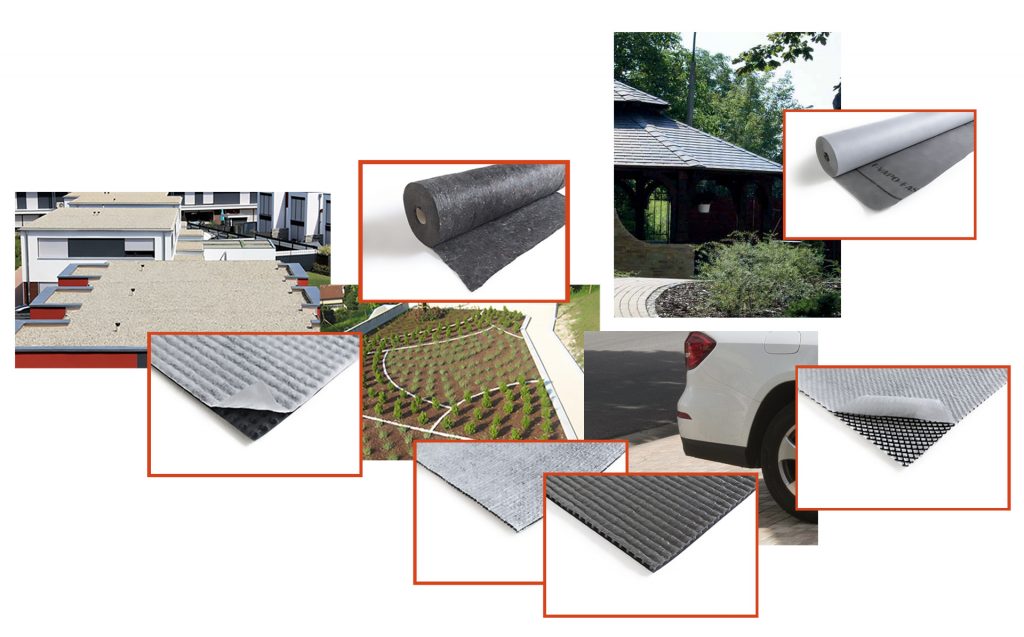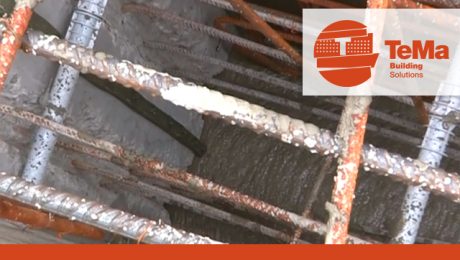Waterproofing when concrete casting
Concrete casting involves creating a new concrete element as a continuation of an already existing one. Most often it’s impossible to create a monolithic block with a single casting: consider, for example, very large structures or the connection between vertical and horizontal walls. With concrete casting you can obtain monolithic structures with their own characteristics, built in stages at subsequent times. So, you proceed with small blocks and join each casting to the previous one, creating a monolith piece by piece.
Structural connection is achieved by using reinforcing irons, taking special care with drilling the existing block and the length of anchorage. While ensuring attachment to the sequence of blocks, reinforcing irons are potential lines for water seepage. We well know that accumulation of moisture in walls may have very severe consequences: structural fragility and very unhealthy stains and moulds.
An effective solution is to insert bentonite kerbs which waterproof any voids that may have formed at the base of walls or in contact with reinforcing irons. The intrinsic property of sodium bentonite is exploited, which is the ability to swell on contact with water, filling the available space and forming an impermeable compound.
Furthermore, this material provides high resistance to hydraulic load, is easily applied and adheres perfectly to the support.
The range of building products from TeMa Building Solutions also includes T-Bentostop, the waterstop made of hydro-expanding bentonite for waterproofing and sealing concrete casting.
- Published in BUILDING, Concrete paving, Foundation and underground structures - Systems for Waterproofing
The roof: problems to be tackled and solutions to be adopted
“A hole in the roof is enough to ruin a home.”
So the (Italian) saying goes. Of course, there may not be any holes in the roof in the strict sense of the word, but, unfortunately, in a broad sense there might be. Roofs are subject to problems such as water seepage, damp and, in the case of trafficable flat roofs or car park roofs, heavy loads.
The roof is the part of a building directly exposed to weather conditions, such as rain, snow and hail, but also to heavy loads. It’s the least visible part of the house and the most difficult to inspect. When building a roof, it’s therefore essential to consider factors that might affect its integrity and safety, as well as harm the health of occupants.
Water seepage leads to damp and peeling walls. Dampness means mould and unhealthy attic environments.
So, let’s take a look at the main problems and see what solutions can be found.
Water seepage
Ponding on a roof will wet and ruin the materials used. It’s therefore necessary to install a drainage system for rainwater or, in the case of trafficable flat roofs, for accidental leaks of oil or fuel from vehicles. This applies to green roofs, trafficable flat roofs and ballasted flat roofs.
Solutions need to be found that don’t increase the “load” on the roof.
Solutions
TeMa Building Solutions recommends installing its drainage geocomposite , T-Mix Drain Plus and TMD 1011, ideal for trafficable flat roofs and flat green roofs; its T-Kone G Drain studded membrane, suitable for ballasted flat roofs and flat green roofs; or T-Net Drain geonet for trafficable flat roofs.
Vapour control
It’s also necessary to focus on vapour control. Due to temperature differences between the air and the roof material, there’s a risk of condensation forming. To prevent this, highly waterproof vapour diffusion membranes need to be laid.
Solutions
The membranes in the T-Vapo range act as a barrier, retarder and vapour diffuser for pitched roofs.
Mechanical protection of waterproofing
The first step is to ensure that the waterproofing layer is intact and remains that way. Any cracks, cuts or inaccurate application in corners can cause irreparable damage to the underlying surface, requiring major intervention and considerable costs. By the time damp patches appear, the damage is often already severe.
Moreover, in the case of roofs used as parking areas or flat green roofs, the heavy weight that the materials need to withstand must be considered.
Solutions
TeMa Building Solutions proposes its T-Kone G Drain studded membrane and the Tematex range of geotextiles for flat green roofs.

- Published in BUILDING, Drainage geocomposites, Studded membranes and accessories



